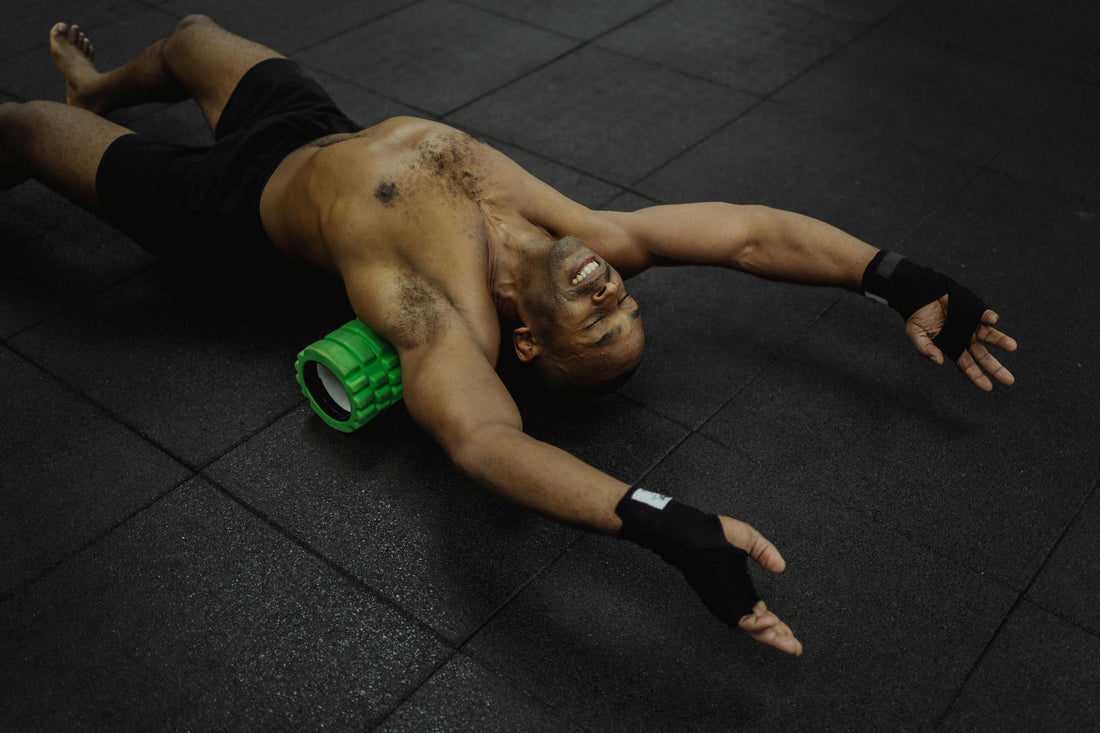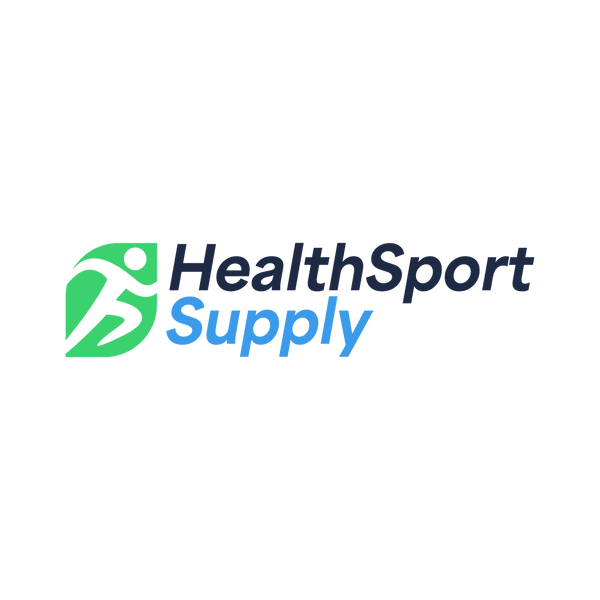
Why Every Athlete Needs a Foam Roller
Share
What Is a Foam Roller and How Does It Work?
A foam roller is a cylindrical massage tool designed to aid in muscle recovery, increase range of motion, and relieve soreness through self-myofascial release (SMR). Athletes, physical therapists, and trainers use rollers to apply pressure to tight muscle groups, reduce adhesions in the fascia, and release trigger points—small knots in the tissue.
Using a foam roller mimics the benefits of deep tissue massage, but puts the control in your hands. By rolling over specific body parts—like the calves, quads, glutes, and back muscles—you use your body weight to apply targeted pressure. This stimulates blood flow, decreases muscle pain, and improves the body’s natural healing response.
Foam rollers, roller massagers, and massage rollers are available at HealthSportSupply.com, providing athletes and active individuals with tools for total-body maintenance and performance.
Top Benefits of Foam Rolling for Athletes
For anyone involved in high-performance sports, the benefits of foam rolling go far beyond relaxation. When added to your warm-up or cool-down routine, using a foam roller can help:
- Reduce muscle soreness and post-workout fatigue
- Improve range of motion and flexibility
- Increase circulation to promote muscle recovery
- Break up scar tissue and improve fascia elasticity
- Accelerate healing after sports injuries
- Prepare muscles for intense workouts
- Prevent adhesions and improve performance
Studies suggest that foam rolling can reduce delayed-onset muscle soreness (DOMS) when performed after exercise and may also enhance neuromuscular efficiency during athletic activity.
Choosing the Right Foam Roller: Texture, Density & Size
Texture: Smooth vs. Textured Foam Rollers
- Smooth foam rollers provide consistent pressure and are great for beginners or those with sensitive muscles.
- Textured foam rollers (such as the TriggerPoint Grid or RumbleRoller) feature ridges or knobs that simulate fingers and elbows during a deep-tissue massage. These are more intense and are best for targeted triggerpoint work.
Density: Soft, Medium, or Firm
- Softer foam rollers (low-density EVA foam) are ideal for beginners or those with low pain tolerance.
- Medium density rollers offer balanced pressure—great for regular training recovery.
- High density foam rollers (such as EPP foam roller, Yes4All High Density, or Amazon Basics) provide extra firm pressure and are preferred for deep tissue release.
Size & Shape
- 36 inches: Full-length round foam roller—great for total body use, including the spine and neck.
- 18 inches: Good for travel and targeting smaller areas like calves or hamstrings.
- 6 inches: Half round foam roller—used for balance, stability exercises, or foot and calf work.
Core foam options with center grooves or contoured edges help avoid pressure on bony areas while still addressing muscle tension.
If you're choosing a foam roller for the first time, start with a medium-density, smooth surface, and graduate to more textured or firm tools as your body adapts.
How to Use a Foam Roller Effectively
Foam rolling works best when used with intention. It’s not just about aimlessly rolling back and forth—it’s about targeting trigger points, maintaining proper alignment, and applying the right amount of pressure.
Step-by-Step Foam Rolling Tips:
- Start slow and breathe through discomfort (not pain).
- Roll over the target muscle group slowly (1 inch per second).
- Spend 30–60 seconds on each tight area.
- Pause and hold gentle pressure on any knots or sensitive points.
- Avoid rolling directly over joints or bones.
Examples:
- Calves: Sit with legs extended, place the foam roller under the calves, lift your hips, and roll back and forth.
- Quads: Lie face down with the roller under your thighs, supporting yourself on your forearms.
- Upper back: Lie back with the roller under your shoulder blades and roll to the mid-back—avoid rolling the lower spine directly.
When and How Often Should You Foam Roll?
Incorporating foam rolling into your regular fitness routine is one of the most effective ways to support recovery and performance.
When to Foam Roll:
- Pre-workout: To increase circulation and prepare muscle groups for movement
- Post-workout: To alleviate muscle tension, improve mobility, and reduce soreness
- On rest days: To enhance recovery and maintain range of motion
How Often?
- 3–5 times per week is optimal for most athletes
- Daily rolling is safe as long as you avoid inflamed or acutely injured areas
As with any massage tool, consistency matters. Regular use leads to long-term improvements in muscle recovery and performance.
Targeted Recovery for Calves, Quads, Back, and More
Foam rollers are designed for total body application. Here’s how using a foam roller benefits specific areas of the body:
1. Calves
- Alleviates tightness from running, cycling, and jumping
- Improves ankle mobility and stride length
2. Quads
- Essential for runners, lifters, and athletes prone to knee pain
- Relieves tension that contributes to patellar misalignment
3. Hamstrings
- Supports injury prevention and hip mobility
- Releases knots after explosive movements or sprints
4. Glutes
- Important for posture, balance, and hip stabilization
- Reduces sciatic nerve pressure and general hip tension
5. Upper Back and Lats
- Eases muscle pain from lifting, paddling, or posture issues
- Enhances thoracic mobility
Massage rollers and roller sticks are also helpful for hard-to-reach or small muscle groups like the forearms, adductors, and feet.
Foam Rolling vs. Deep Tissue Massage
Both foam rolling and deep tissue massage aim to reduce tension, improve circulation, and break up adhesions—but they serve different roles in recovery.
| Feature | Foam Rolling | Deep Tissue Massage |
|---|---|---|
| Cost | One-time purchase | Per session |
| Convenience | At home, anytime | Scheduled, in-clinic |
| Pressure Control | Self-directed | Therapist-controlled |
| Customization | Varies by tool and technique | Varies by practitioner |
| Use Case | Daily maintenance, warm-up, recovery | Chronic pain, complex tension |
Foam rollers are ideal for long-term use, offering daily support and enabling self-myofascial release without ongoing expense.
Where to Buy High-Quality Foam Rollers
High-performance athletes, trainers, and rehab professionals rely on quality equipment for consistent results. At HealthSportSupply.com, you’ll find:
- Textured foam rollers for deep tissue massage
- Core foam and contoured rollers for spinal and posture support
- Extra firm foam rollers for advanced myofascial release
- Vibrating foam tools for active recovery
- Tools like the TriggerPoint Grid, OPTP Pro-Roller, Gaiam Restore Foam Roller, and R4 recovery rollers
You can also shop roller sticks, EVA foam rollers, half round foam rollers, and other massage tools for every athlete’s needs.
FAQs About Foam Rolling
1. What does a foam roller do for muscles?
A foam roller helps break up adhesions in the fascia, improve blood flow, and reduce muscle soreness through self-myofascial release. It mimics deep tissue massage, making it a practical recovery method for athletes.
2. How often should athletes use a foam roller?
Ideally, foam rolling should be done 3–5 times per week or daily depending on training intensity. Regular use supports muscle recovery, prevents injury, and maintains mobility.
3. What’s the difference between a smooth and textured roller?
- Smooth rollers provide gentle, even pressure—great for beginners.
- Textured rollers (like the Triggerpoint Grid) have ridges or knobs for more intense, targeted work on trigger points and tight muscle groups.
4. Can foam rolling help prevent injuries?
Yes. Foam rolling improves range of motion, reduces tightness, and corrects muscle imbalances—all of which reduce the likelihood of sports injuries and overuse issues.
5. Should I foam roll before or after a workout?
Both! Foam roll before a workout to stimulate blood flow and loosen stiff tissue. Post-workout rolling helps flush toxins, reduce soreness, and accelerate muscle recovery.
6. Which foam roller is best for beginners?
Beginners should start with a smooth, medium-density roller (like a Gaiam Restore Foam Roller or Amazon Basics foam roller) to acclimate muscles to pressure without excessive discomfort.
7. Does foam rolling hurt, and is that normal?
Some discomfort is normal, especially when working on tightness or trigger points. However, it should never be sharp or unbearable. If it is, use a softer foam roller and reduce your body weight on the area.
Final Thoughts
Every athlete—whether training for competition or maintaining an active lifestyle—can benefit from foam rolling. It’s a low-cost, high-impact recovery method that supports mobility, reduces muscle pain, and enhances performance when used consistently.
By choosing the right foam roller based on your body, fitness goals, and muscle group needs, you’ll be better prepared for your next workout or event.
Visit HealthSportSupply.com to explore our full collection of foam rollers, massage tools, and self-myofascial release equipment trusted by professionals in sports medicine and recovery.
